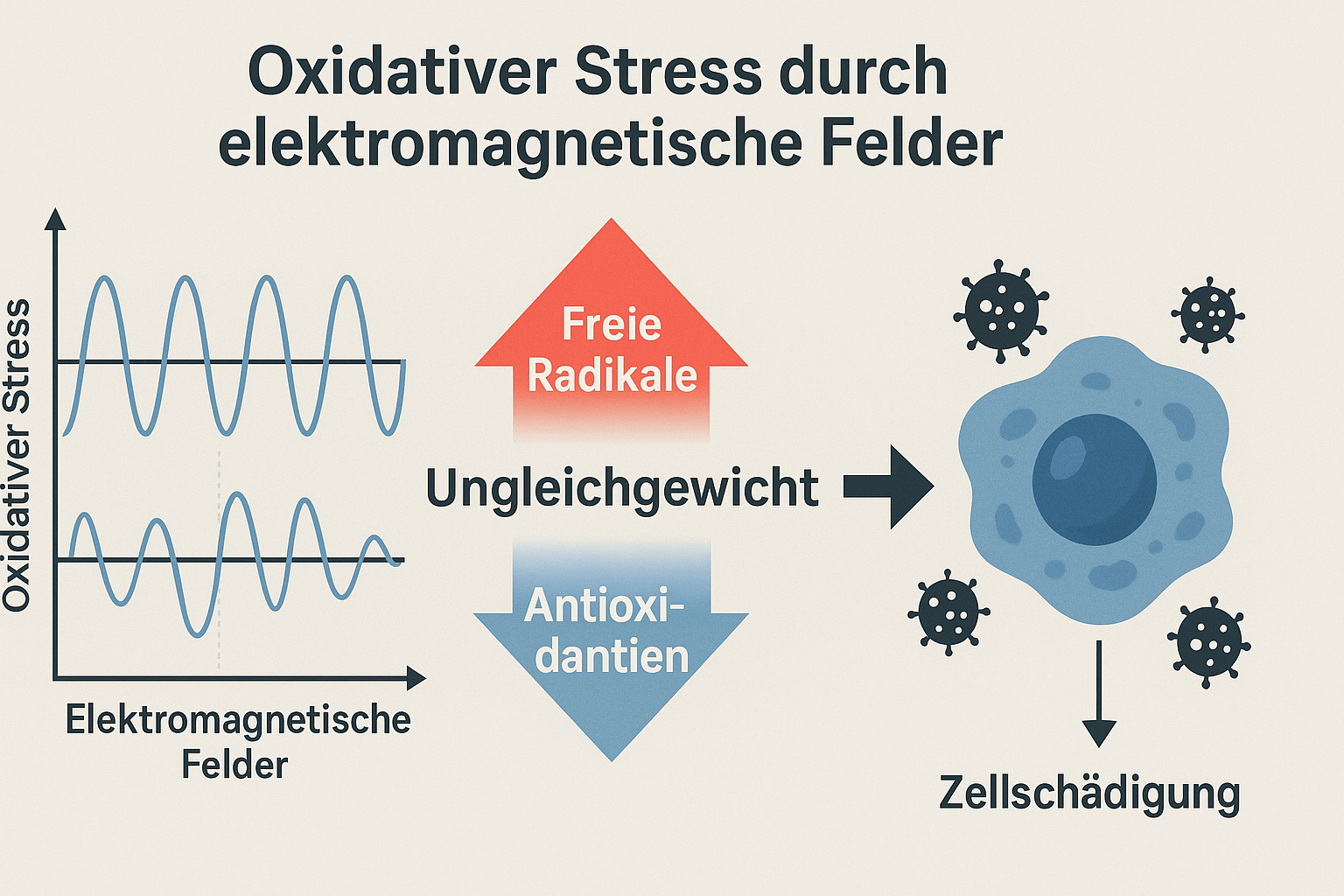
Effects of electromagnetic fields on biological systems - What science knows about magnetic fields and health
Introduction: Electromagnetic fields in everyday life
Electromagnetic fields (EMFs) are ubiquitous today - from power lines to household appliances and mobile phones. While they are essential to modern technology, there is growing interest in their potential effects on health.
Scientists such as Hashish et al (2008) systematically investigated how static magnetic fields (SMF) and extremely low frequency electromagnetic fields (ELF-EMF) can influence biological processes. The aim was to find out whether and how long-term exposure triggers physiological changes.
Research fundamentals: Why EMF is a scientific concern
Increasing exposure to artificial magnetic fields
The electromagnetic environment has changed drastically since industrialisation. While the earth's natural magnetic field is around 0.05 mT, technical devices generate much stronger fields locally.
Research is focussing in particular on 50 Hz fields from power grids and static magnetic fields from loudspeakers or electric motors. Studies show that they can affect biological systems not only thermally, but also at a cellular level.
WHO classification and health concerns
Since 2002, the World Health Organisation (WHO) has classified low-frequency magnetic fields as "possibly carcinogenic to humans" (Group 2B). The reason: possible links between EMF exposure and an increased risk of leukaemia in children.
Although the evidence is inconsistent, expert committees worldwide are calling for further research into long-term effects and oxidative stress.
The study at a glance
Research objective and structure of the study
In the study by Hashish et al., male mice were exposed to either static magnetic fields or low-frequency electromagnetic fields for 30 days. The aim was to document possible changes in the blood, liver and immune system.
The experimental set-up: mice under the influence of a magnetic field
-
SMF system: Permanent magnets generated a field of ±2.9 mT.
-
ELF-EMF system: A 50 Hz field of 1.4 mT was generated using Helmholtz coils (see figure on page 4 of the study).
-
Control group: Animals without exposure.
After 30 days, blood and tissue samples were analysed to measure enzyme activities and antioxidant markers.
Measured variables: Blood, liver and immune cells
Among other things, the following were analysed:
-
Blood sugar and protein levels,
-
Liver enzymes (ALP, LDH, GGT, GST),
-
Glutathione content (GSH),
-
Lipid peroxidation (TBARS) as a measure of oxidative stress,
-
Lymphocytes and granulocytes in the blood and spleen.
Important results of the study
Weight loss and metabolic changes
After 30 days, there was a significant weight loss in the exposed mice (see graph on page 5). The researchers suspect metabolic or hormonal causes. Blood sugar levels were also significantly reduced with EMF exposure.
Changes in liver function and enzyme activity
Both SMF and ELF-EMF led to increased liver enzymes (LDH, GST, GGT) and a simultaneous decrease in glutathione (GSH). These patterns indicate oxidative stress and liver cell damage.
Effects on immune cells
The number of lymphocytes, T and B cells decreased, while granulocytes increased - a typical sign of an inflammatory reaction. This confirmed that magnetic fields can influence the immune defence.
Indications of oxidative stress
Increased levels of TBARS (lipid peroxidation) showed that EMF promotes the formation of free radicals. The disturbed balance between oxidative and antioxidative processes can favour cell damage in the long term.
Biological mechanisms behind the changes
Role of free radicals (ROS)
Free radicals are produced as by-products of metabolism. EMFs can prolong their lifespan and promote reactions with cell membranes or DNA.
Significance of the glutathione system
The glutathione system (GSH, GST, GGT) is a central antioxidant line of defence. Decreasing GSH levels and increasing GGT activity are clear markers for oxidative stress.
Cell stress and inflammation
Activated granulocytes and macrophages release more superoxide radicals when exposed to EMF, which can lead to inflammatory processes and tissue damage.
Comparison with other scientific studies
Several studies confirm the results of Hashish et al.:
-
Wolf et al. (2005): DNA damage and increased oxidative markers after 50 Hz EMF.
-
Simko et al. (2001): Activation of phagocytes and superoxide formation.
-
Al-Akhras et al (2006): Hormonal effects in rats.
These findings suggest that EMF can trigger both cellular and systemic changes.
Conclusion: What do these results mean for humans?
Even if animal studies do not allow direct transferability to humans, they show that EMF can influence biological systems - particularly through oxidative stress.
Long-term exposure should therefore be minimised, especially in sensitive areas such as bedrooms or workplaces with strong magnetic fields.
Recommendation:
-
Switch off electrical appliances at night.
-
Keep away from strong EMF sources (e.g. routers, transformers).
-
Conscious consumer behaviour when dealing with technology.
Frequently asked questions (FAQ)
1.What is the difference between static and low-frequency magnetic fields?
Static fields are constant over time, while ELF-EMF (50/60 Hz) are oscillating fields.
2.Can magnetic fields cause cancer?
The WHO categorises them as "possibly carcinogenic", but there is no clear evidence.
3.What role does oxidative stress play in magnetic field exposure?
Oxidative stress is considered to be the main mechanism for cell damage under the influence of EMFs.
4.How strongly are we exposed to magnetic fields in everyday life?
Household appliances usually generate <0.1 mT, high-voltage power lines up to 10 mT in the immediate vicinity.
5.Are there protective measures against electromagnetic radiation?
Yes, e.g. shielding paints, mains isolators and conscious reduction of exposure time.
6.How does the WHO assess the risks of magnetic fields?
It recommends precautionary measures and continuous research.
Conclusion
The research by Hashish et al. (2008) provides valuable evidence that electromagnetic fields can measurably alter biological processes - particularly via oxidative stress.
Future studies must clarify how these mechanisms work in humans and whether there are long-term health risks.
